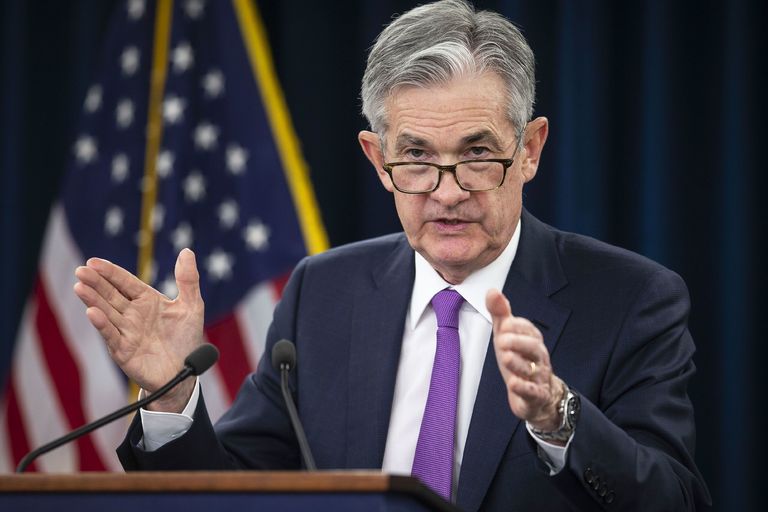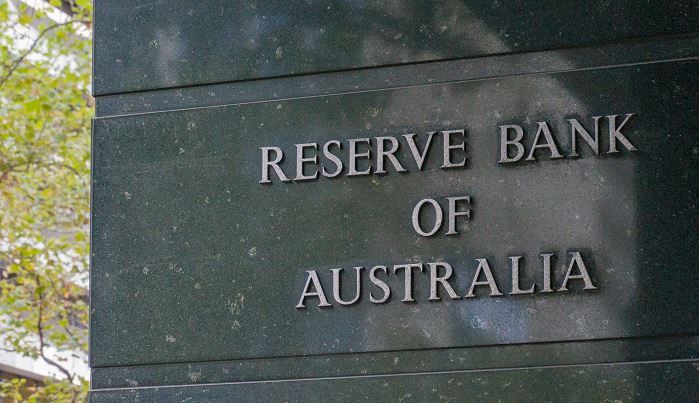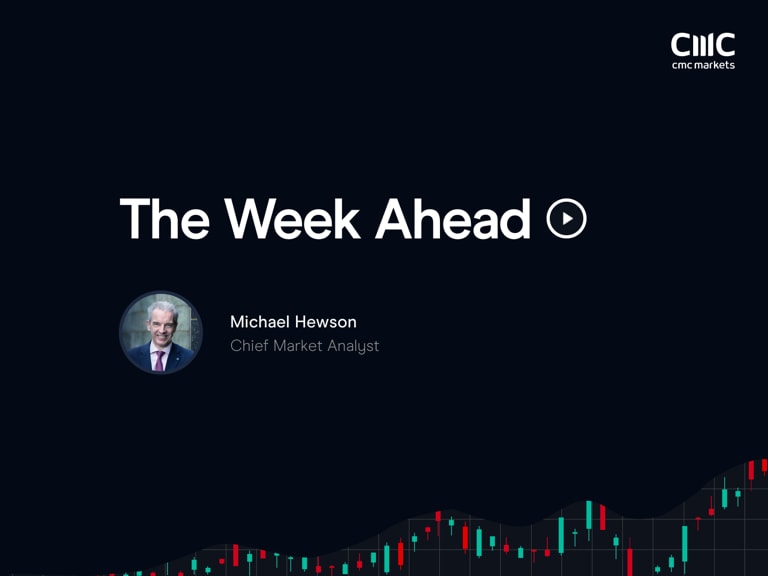Read our pick of the main stories to look out for in the week commencing 22 November, and view our key company earnings schedule.
This week, Michael Hewson offers insights on US inflation, as measured by the PCE deflator, minutes from the Fed's recent meeting, and company updates from the likes of Zoom and Severn Trent.
OUR TOP 3 STORIES:
US PCE deflator (October) – Wednesday
Rising headline CPI and PPI measures of inflation have tested the US Federal Reserve’s narrative that inflation is “transitory”, a stance which the Fed used to support its decision to reduce its bond-buying programme from $120bn a month to $105bn, starting this month. There are voices urging the central bank to trim the programme by more than $15bn a month – voices which could get louder if the core personal consumption expenditure (PCE) deflator, a measure of inflation closely watched by the Fed, posts an increase for October. In September, the annual rate of inflation as measured by the PCE deflator was 4.4%, a 30-year high, while the core deflator measure was 3.6%. The latter could soon edge towards 4%, a level last seen in 1990. With the latest Fed minutes due a few hours after the PCE data, the debate around the pace of tapering could intensify.
Fed minutes – Wednesday
As expected the US Federal Reserve announced earlier in November that it would reduce its monthly asset-purchase programme by $10bn in treasuries and $5bn in mortgage-backed securities, starting this month. In the subsequent press conference Fed chair Jay Powell pushed back on expectations of a rate hike, insisting that policymakers were united in their view that inflation was transitory and that, while prices were likely to rise further, they would soon fall back without undermining the recovery. We’ll get to see how much truth there is in this narrative, with the release of the Fed’s minutes this week.
Recent comments from some Fed officials appear to reveal a growing unease about the pace of price rises, with some suggestion that there is disagreement about how persistent these price pressures may be. While the reduction of asset purchases was expected, it will be interesting to find out how many members of the policy-setting Federal Open Market Committee wanted to go faster. The latest FOMC minutes should offer insights on how the board’s discussions played out, perhaps giving an indication of whether more Fed policymakers could be inclined to move their dot plots when they hold their final meeting of the year in a few weeks’ time. In September the committee was evenly split on raising rates next year, with nine members in favour of at least one rate hike in 2022 and nine members seeing the case for no rate hike. However, the maths may have changed since then, following the departure of Eric Rosengren, head of the Federal Reserve Bank of Boston, and Robert Kaplan, head of the Federal Reserve Bank of Dallas, both of whom leaned towards the hawkish side of the debate.
Zoom Q3 results – Monday
Zoom was one of the big winners of 2020, its share price rocketing from $68 at the start of that year to $559 by October 2020. One year on, Zoom’s share price has crashed back down to earth, closing below $250 on 11 November. The shares are currently down more than 25% year-to-date. That’s not to say that business hasn’t been good. It has. Zoom’s quarterly revenue exceeded $1bn for the first time in Q2, as profits came in at $317m, or $1.04 a share. However, the company’s guidance for Q3 was disappointing, with management saying that it expected Q3 revenue to remain flat quarter-on-quarter, although profits were forecast to grow to $340m-$345m, or $1.07-$1.08 a share. For the full fiscal year, Zoom said it expected to see revenue of $4bn, an improvement on expectations at the start of the year. It is therefore odd that the shares have declined so much. To understand why, we must look at Zoom’s valuation. Even at its current level of around $75bn, Zoom’s market capitalisation still appears high for a video conferencing company with technology that is easily replicable. Although Zoom is profitable, it doesn’t really have any other strings to its bow. Its competitors – LogMeIn, Cisco’s Webex, and Microsoft-owned Skype and Teams – are starting to up their game, even if they aren’t their owners’ core products, which could mean that Zoom has to work even harder to stay in the race. Zoom has done well, but it will have to continue to invest in improving its infrastructure. Industry competition is likely to continue to subject Zoom’s valuation to close scrutiny, with some investors questioning whether the current level can be sustained. Q3 profits are expected to come in at $1.08 a share, in line with company guidance.
OTHER KEY EVENTS:
TUESDAY 23 NOVEMBER
Germany, France flash PMIs (November)
Although PMIs in Europe have likely peaked this year, it’s surprising that the numbers have remained in expansion territory when related industrial and manufacturing production numbers have been so poor. Germany, whose large automotive industry’s biggest market – China – has undergone a major slowdown, has delivered resilient PMI numbers despite weak factory orders data. With infection rates in Germany starting to head higher in recent weeks, there is increasing anxiety about the need for further lockdowns, which could hit the services sector. German manufacturing PMI is expected to slip from October’s downwardly revised figure of 57.8 to 57.0 in November, while services PMI, which was 52.4 in October, could fall to 52.0. In France, manufacturing PMI fell to 53.6 in October, down from 55.0 in September, while services PMI was 56.6 in October, up from 56.2 a month earlier.
UK flash PMI (November)
UK manufacturing and services activity showed signs of stabilising in October, though rising power prices are becoming a headwind. UK manufacturing PMI was 57.8 in October, up from 57.1 in September, rising for the first time in five months, suggesting that the Q3 slump could turn into a Q4 rebound. That said, the question of how much stock we should set in these numbers is debatable, given the travails of the UK automotive industry, which has witnessed sharp declines in sales due to various parts shortages. Meanwhile, UK services PMI climbed to 59.1 in October, up from 55.4 in September, perhaps partly driven by half-term breaks and the large-scale return to cinemas, which saw Cineworld report a 127% increase in revenue from 2019 levels during October.
Severn Trent half-year results
In May, when Severn Trent reported results for the year to March, it was clear that the pandemic had a negative impact on the company. Revenue fell to £1.83bn while profits declined 17% to £471m, as increased domestic water usage was offset by declines in commercial and business usage. Despite these struggles, the full-year results also showed that Severn Trent received an outperformance reward of £79m for its delivery on customer Outcome Delivery Incentives (ODIs). ODIs are used by Ofwat to encourage water companies to meet and exceed their commitments to customers, from ensuring smooth supply to preventing sewers from flooding and cleaning up water pollution. Severn Trent’s share price has recovered from the steep decline in March 2020 when the pandemic first hit, reaching a record high in August. The stock is currently up around 20% year-to-date. When Severn Trent reported its Q1 numbers in July, it said that it was on course to meet the full-year revenue target of £1.78bn to £1.81bn that it set at the end of its last financial year. It also said it was confident of achieving at least £40m in ODI payments. In November, the company came more than halfway towards reaching that goal, as Ofwat announced a £25m outperformance payment for the business.
Best Buy Q3 results
US retailer Best Buy’s share price has gone from strength to strength this year – it’s currently up 36% year-to-date, sitting at a record high of £135. The company has performed consistently well over the last ten years, after an unsuccessful dabble in the UK market more than a decade ago. Best Buy originally guided same-store sales growth of 3-6% this year, before raising that guidance in August to 9-11%, despite having previously warned that sales growth could slow in the second half of the year. Q1 revenue came in at $11.64bn, with online sales up 37.2%, prompting the retailer to cut in-store jobs. In Q2, revenue came in at $11.85bn, beating expectations, while profits equalled $2.98 a share, crushing expectations of $1.85. The company also raised its full-year revenue guidance to between $51bn and $52bn. Q3 revenue is expected to come in at $11.5bn, with profits estimated to be worth $1.87 a share.
WEDNESDAY 24 NOVEMBER
US Q3 GDP
The first estimate of US Q3 GDP, released in late October, showed that the US economy grew at a disappointing annual rate of 2%, missing estimates for growth of 2.6%. As expected, the figure was well short of the 6.3% and 6.7% growth posted in Q1 and Q2, respectively. The slowdown in Q3 was due to a number of factors, including an increase in cases of the delta variant, weak demand and supply chain disruptions. One takeaway from the first two quarters of the year was growth in personal consumption, up 11.4% in Q1 and 12% in Q2. Growth in personal consumption slowed to 1.6% in Q3, giving some indication of the extent to which higher prices and falling consumer confidence affected demand in an economy of price-sensitive consumers. The second and third estimates of quarterly GDP tend not to have a significant impact on markets.
Germany IFO (November)
Having peaked in the summer months, Germany’s IFO business climate index, a closely watched indicator of economic developments in the country, dropped to 97.7 in October, down from 98.9 in September. The October figure was the lowest reading since April, indicating that sentiment has been hit by supply chain disruptions, political uncertainty surrounding the formation of a new government in Berlin, and the economic slowdown in China – one of Germany’s key export markets. The summer floods haven’t helped, though the recovery process has the potential to boost economic output. Looking ahead, the business climate index is expected to fall to 96.7, as rising Covid hospitalisation rates could prompt localised restrictions, while factory gate prices could be set to rise further, having posted an increase of 14.2% year-on-year in September, and a record 18.4% rise in October.
Johnson Matthey half-year results
The share price of British chemical and technology firm Johnson Matthey tanked last week after the company issued a profit warning and announced that it was looking to sell its battery materials business, citing difficulties in generating decent returns. The net assets of the battery business are valued at approximately £340m. The decision to drop its work on battery materials for electric vehicles surprised investors, given the automotive industry’s transition towards electric power. The company blamed increased competition from other technologies and manufacturers, as well as tight margins. Management also said that exiting the battery market would allow them greater flexibility to pursue investment in hydrogen technologies. Bosses added that half-year results would be in line with expectations, but that the full-year trading outlook would be towards the lower end of market expectations due to the negative effect of US labour shortages on its health business. Consensus estimates suggest that full-year underlying profit will come in at £581m, within the company’s guided range of £550m to £636m.
Deere & Company Q4 results
In August, the US manufacturer of agricultural, forestry and heavy plant equipment reported net income of $4.2bn for the first nine months of its current financial year – more than it earned in the whole of 2013, which until this year was the company’s best ever year in terms of revenue. Since that announcement, however, Deer & Company’s share price has struggled. The shares hit a record high of almost $400 in May this year, but are now trading at £360. Big rises in the price of corn and soybeans seem to be driving up demand for new agricultural equipment, while the prospect of increased spending on infrastructure projects is also helping to prop up the shares. Global sales so far this year stand at $32.7bn, with Q3 sales accounting for $11.5bn. The company says it expects full-year earnings, which it will announce on Wednesday, to be between $5.7bn and $5.9bn. Q4 profits are expected to come in at $3.99 a share.
Index dividend schedule
Dividend payments from an index's constituent shares can affect your trading account. View this week's index dividend schedule.
Selected company results
| Monday 22 November | Results |
| Agilent Technologies (US) | Q4 |
| Arrowhead Pharmaceuticals (US) | Q4 |
| Avaya Holdings (US) | Q4 |
| Big Yellow Group (UK) | Half-year |
| Carr's Group (UK) | Full-year |
| Diploma (UK) | Full-year |
| Enanta Pharmaceuticals (US) | Q4 |
| Genasys (US) | Q4 |
| Keysight Technologies (US) | Q4 |
| Polar Capital Holdings (UK) | Half-year |
| Twist Bioscience (US) | Q4 |
| Urban Outfitters (US) | Q3 |
| Zoom Video Communications (US) | Q3 |
| Tuesday 23 November | Results |
| Abercrombie & Fitch (US) | Q3 |
| Accsys Technologies (UK) | Half-year |
| American Eagle Outfitters (US) | Q3 |
| Analog Devices (US) | Q4 |
| Anaplan (US) | Q3 |
| AO World (UK) | Half-year |
| Best Buy (US) | Q3 |
| Burlington Stores (US) | Q3 |
| Compass Group (UK) | Full-year |
| Construction Partners (US) | Q4 |
| Cracker Barrel Old Country Store (US) | Q1 |
| Cranswick (UK) | Half-year |
| Dell Technologies (US) | Q3 |
| Gap (US) | Q3 |
| Genius Sports (UK) | Q3 |
| Helical (UK) | Half-year |
| IG Design Group (UK) | Half-year |
| Jacobs Engineering Group (US) | Q4 |
| Nordstrom (US) | Q3 |
| Nutanix (US) | Q1 |
| Pets at Home Group (UK) | Half-year |
| Pure Storage (US) | Q3 |
| Schroder Real Estate Investment Trust (UK) | Half-year |
| Severfield (UK) | Half-year |
| Severn Trent (UK) | Half-year |
| Titan Machinery (US) | Q3 |
| Trifast (UK) | Half-year |
| VMware (US) | Q3 |
| Wednesday 24 November | Results |
| AB Dynamics (UK) | Full-year |
| Alpha Financial Markets Consulting (UK) | Half-year |
| Brewin Dolphin Holdings (UK) | Full-year |
| Britvic (UK) | Full-year |
| De La Rue (UK) | Half-year |
| Deere & Company (US) | Q4 |
| HUUUGE (US) | Q3 |
| Johnson Matthey (UK) | Half-year |
| Seadrill (UK) | Q3 |
| United Utilities Group (UK) | Half-year |
| Thursday 25 November | Results |
| ActiveOps (UK) | Half-year |
| CentralNic Group (UK) | Q3 |
| Omega Diagnostics Group (UK) | Half-year |
| PayPoint (UK) | Half-year |
| Friday 26 November | Results |
| Northern Drilling (UK) | Q3 |
Company announcements are subject to change. All the events listed above were correct at the time of writing.






